How to Reduce Echo and Improve the Acoustics
(without being technical and scientific)
Hello hello hello! In the good old days (you know, the 90’s) echoing didn’t seem to be such a big issue for homeowners – wall to wall carpeting, upholstered furniture and 8′ ceilings made a big difference in the sound absorption of a space. However, echoing seems to be a common complaint these days and there are a few reasons for this…
The 4 Main Reasons Why Your Room Might Echo
Wood Flooring
Carpets are often being replaced with wood/laminate/tile/concrete
Carpet absorbs CONSIDERABLY more sound than hard surfaces, particularly on stairs and in rooms with high ceilings.
In the above photo, there is nothing that will absorb any sound – all of the surfaces (even the leather) bounce it.
High Ceilings and Open Layouts
Homes are being built with open-layouts and higher than usual ceilings (9’+ to vaulted)
It’s the stadium effect…
Leather Furniture
Upholstered furniture is being replaced with leather/vinyl
While leather and vinyl are ‘soft surfaces’ their sound-absorbing features are far different from fabric. And the room above has a double-whammy with vaulted ceilings and leather (but I looove it anyway).
Window Coverings
Blinds are being used in place of draperies
Again, fabrics absorb sound, wood and metal do not.
The blinds shown in the above photo (cellular) are GOOD for acoustics as they are made of fabric!
It’s the soft surfaces in your home that absorb the sound waves – the hard surfaces bounce them around worse than double-d’s on a jog (a problem I do not have…nor do I jog). While it’s best to conquer acoustics when your home is being built, it’s most often too late for that (you know, by like 40 or 50 years) so read on my friend!
Here’s a list of items that absorb sound in a room. Adding some of these items to your room can improve the acoustics and reduce the echoing.
Upholstered Furniture
Furniture that is upholstered in fabric. While it’s okay to have some leather, it’s the fabric pieces that will actually absorb the noise that’s thrown at them, rather than bouncing it back.
Area Rugs
When it comes to area rugs – the bigger it is and the more dense/long the fibre is, the more sound it will absorb. As will wall-to-wall carpeting.
Draperies (floor-length is ideal)
And while these sheers (shown below) won’t absorb as much sound as more thick, dense drapes, they are better than nothing. Combined with the area rug they will definitely help to dampen any noise.
Fabric blinds (such as pleated/cellular)
While PVC or aluminium blinds are more affordable, they will do nothing for the acoustics in a room. Check out pleated, cellular and roman blinds for more sound absorption.
Plants
Best placed in corners to slow down the sound that is bounced off the walls. Even a fake plant can help!
Toss Cushions and Throw Blankets
If you have a leather sofa, adding toss cushions can help absorb some sound. You’ll probably need to add a throw blanket as well, as cushions tend to slide on leather!
Here is a list of items that do not absorb sound in a room and may contribute to echoing…
- Leather (as leather is generally reflective it does not absorb sound)
- Wood/laminate/tile floors
- Walls and ceilings
- Fireplaces
- Mirrors and artwork (unless they’re canvas)
- Wood, metal or glass furniture pieces such as tables/entertainment stands/etc…
- Wicker and plastic
- Doors and windows (windows are one of the worst echo offenders)
- Vaulted ceilings
There shouldn’t be any echo at all in this room, even with its high ceiling!
Other points to ponder to reduce echo in a room – increasing the acoustics…
- Solid wood doors are more effective at keeping sound within a room than hollow-core doors
- Artwork can help on a small-scale if it’s a canvas piece (meaning there is air space behind the artwork)
- While hard furnishings do not absorb sound – they do help to slow down the sound waves; therefore reducing the echo. Adding bookcases, side tables and other furnishings will ‘help’ with the acoustics in your space
- Pushing your upholstered furniture against the walls will decrease the wall space that is available for sound to bounce off of as even leather furniture pieces absorb more sound than drywall
Chat soon,
Kylie M Interiors Decorating Blog E-Design and Color Consulting Budget-friendly decorating ideas Based in Nanaimo BC, Vancouver Island and serving the whole darned World!
Comments
Leave a Reply
More Posts
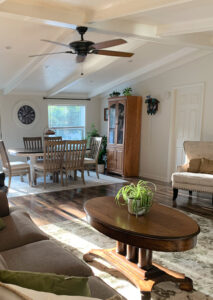
The 5 Best Creamy White or Off-White Paint Colors
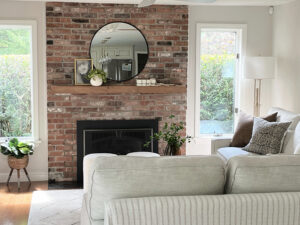
The 8 Best Warm Neutral Paint Colors With NO Yellow Undertones!
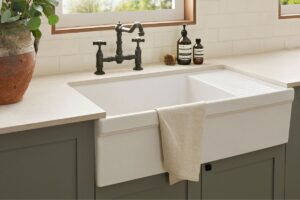


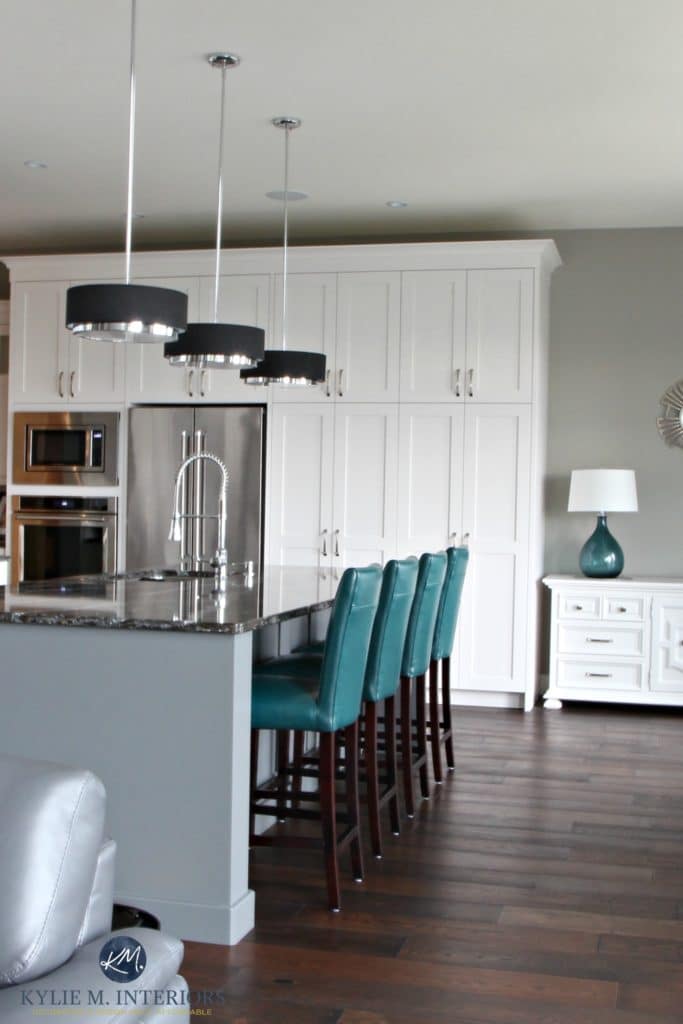
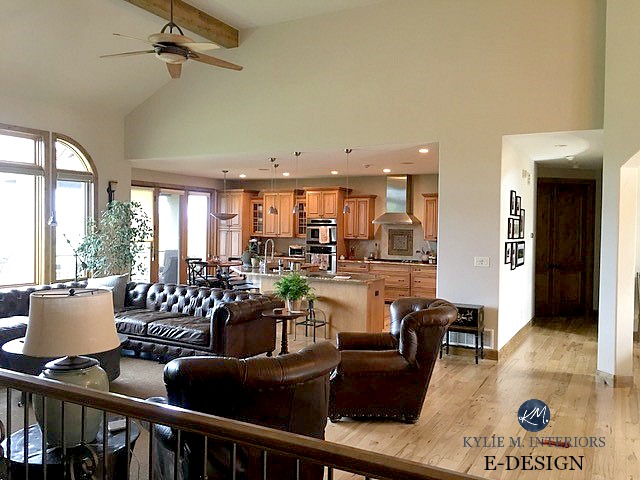
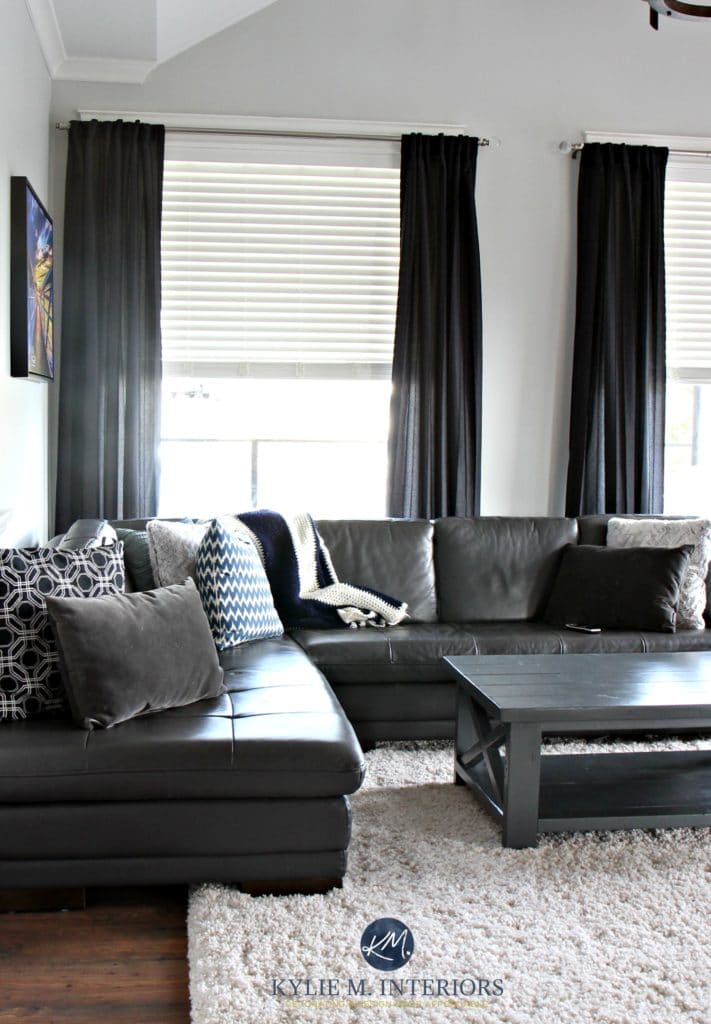
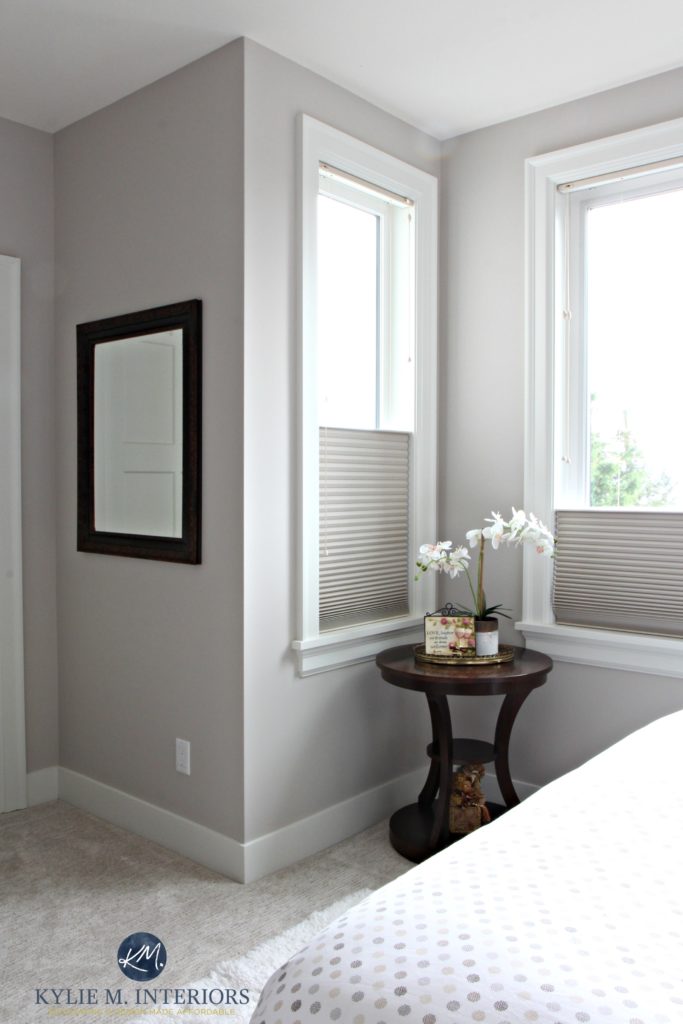
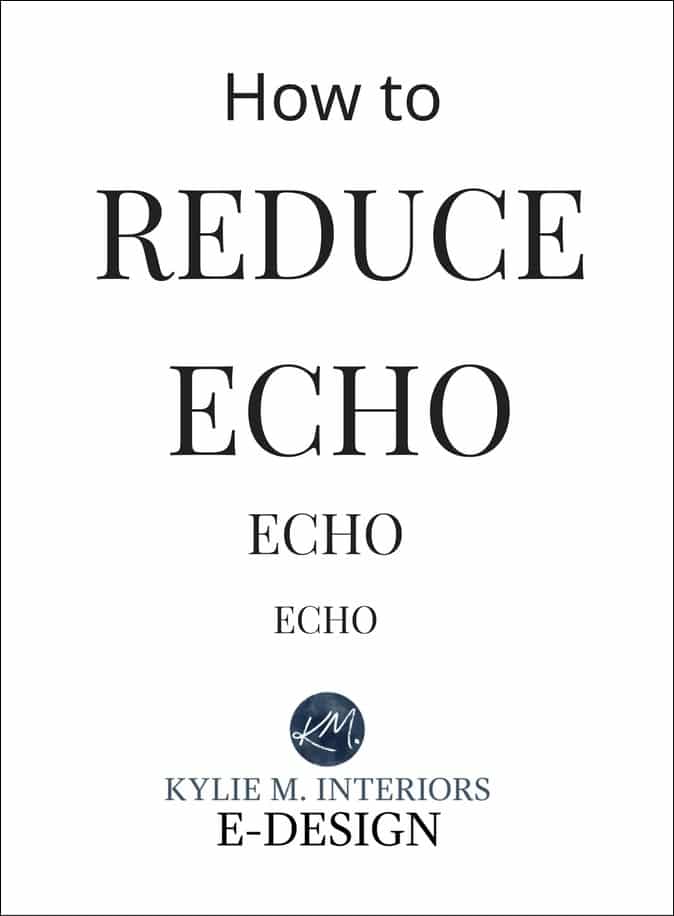

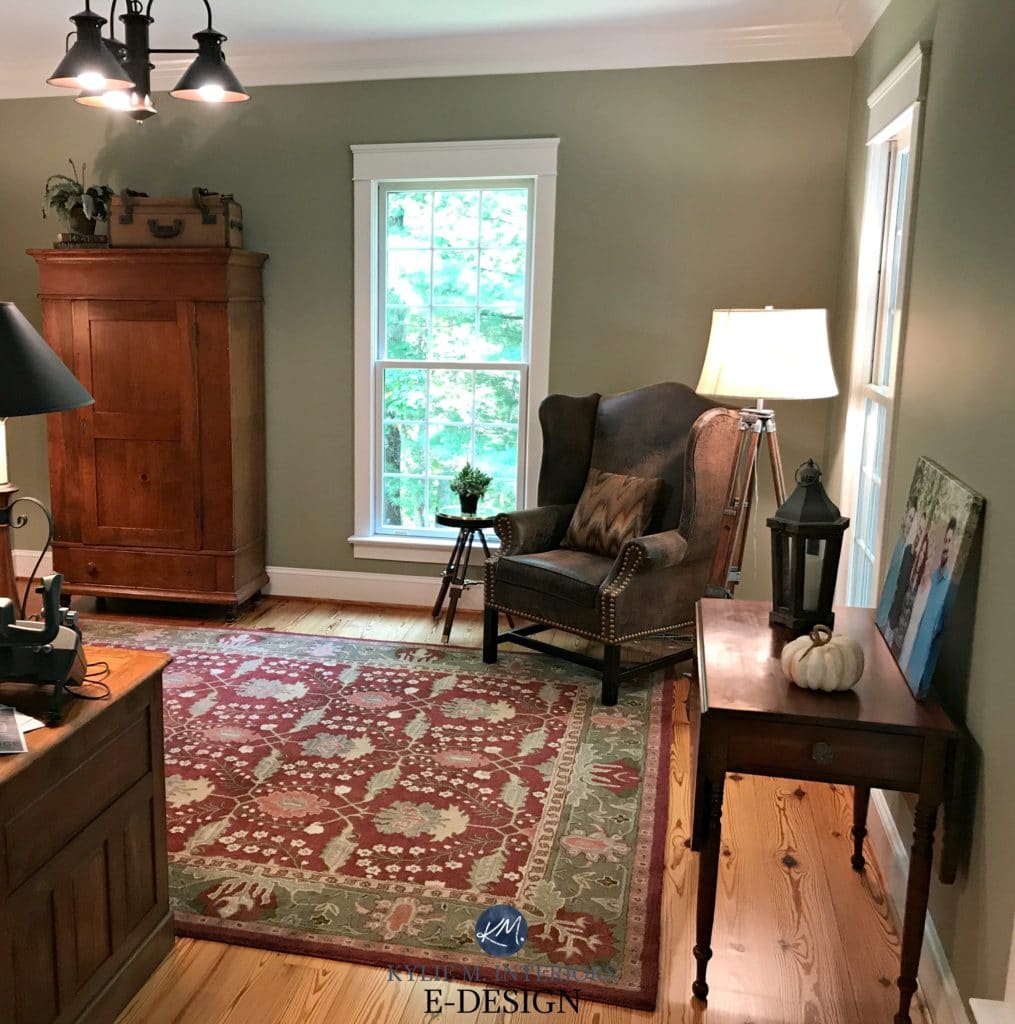
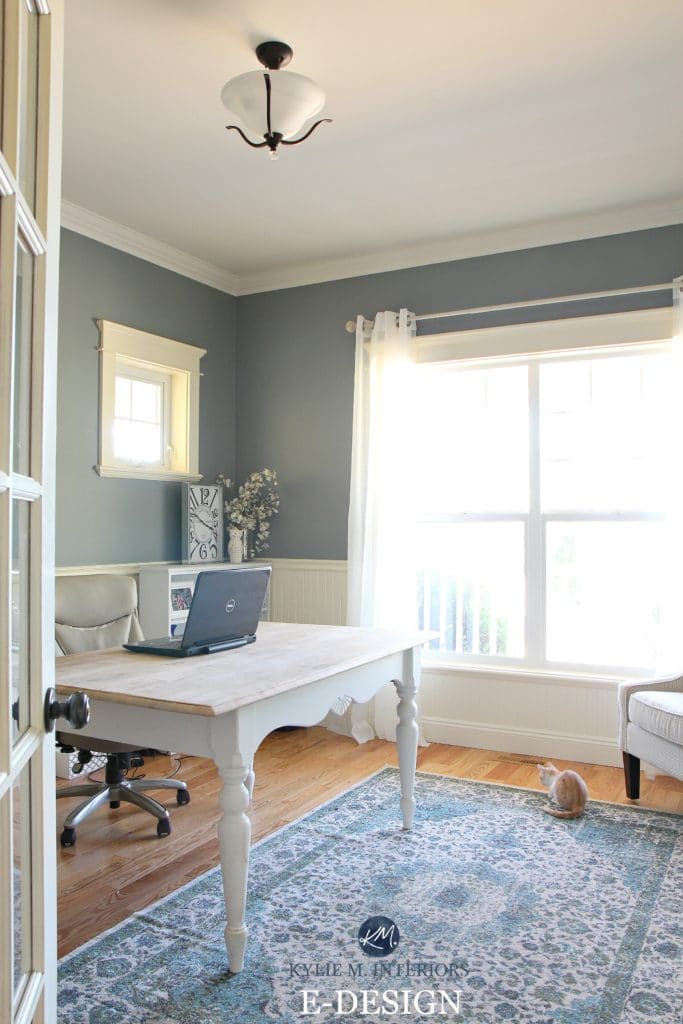
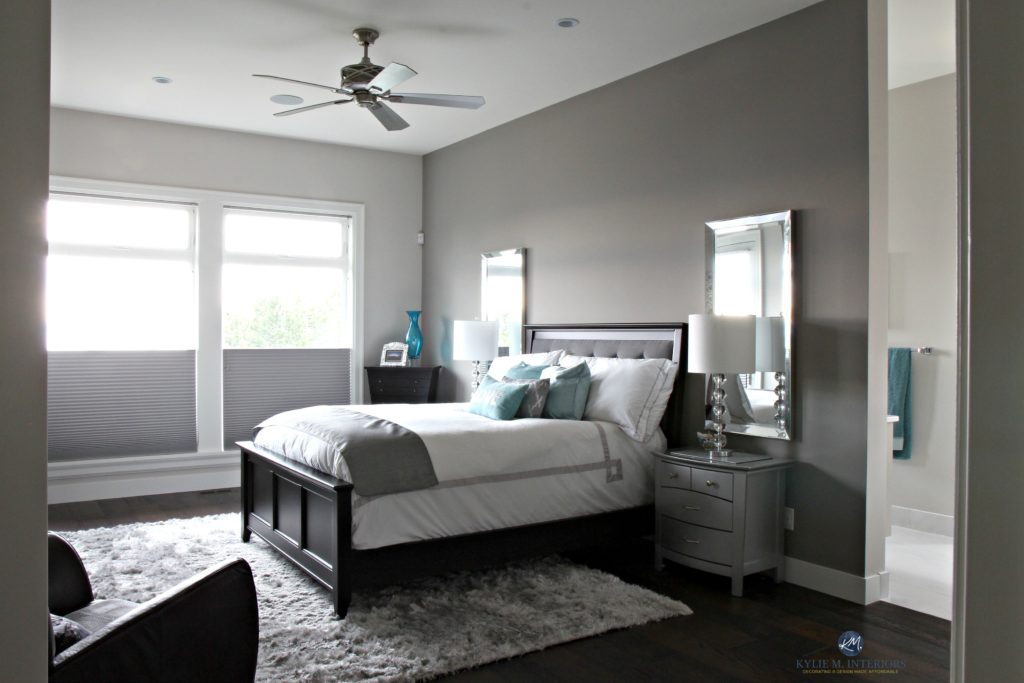




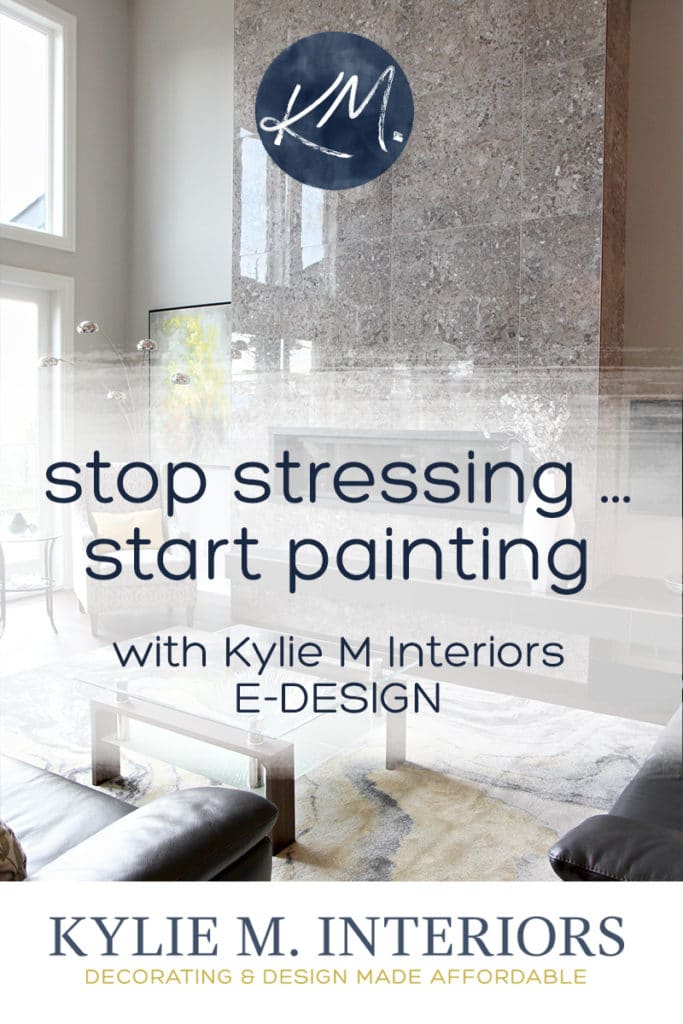
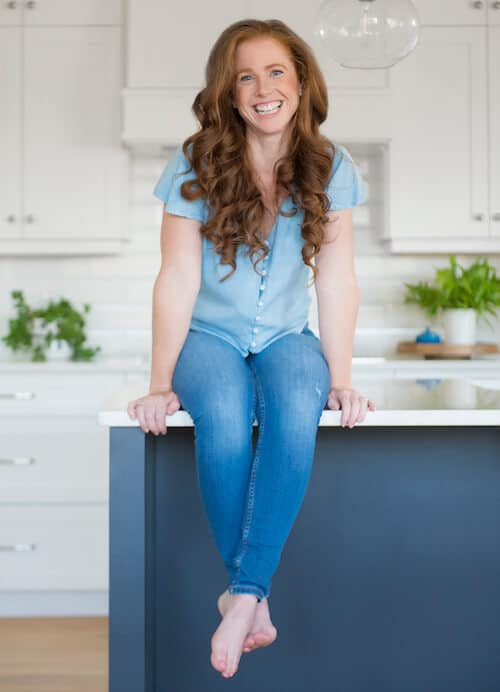

I am thinking of adding wooden or faux beam box type areas to my vaulted ceiling during renos. Would this help with cutting back the echo?
Author
I would think it could help a ‘bit’ as it would stop the noise from bouncing directly off in some spots, but I wouldn’t think it would help a lot as it’s still hard surfaces…
Hi Kylie
We have a noticable echo in our vaulted ceiling kitchen . It previously had a dropped ceiling with 2′ x2′ acoustic tile, but we would like to remove this as part of the reno.. Would knockdown texture on the ceiling help reduce the echo? What about a feature wall of cork tiles?
Author
Hi Marj! Sadly no, textured ceiling won’t do much to help. A feature wall of cork tiles though – absolutely! They are great for sound absorption!
Newly constructed house 2 bedroom its like 1 wall attached to 2 bedroom so no privacy whatever communicate its echo how to avoid n how to furnish
Author
Ooo, that is SW Cyberspace, a super wicked dark charcoal/navy blue blend!
Hi Kylie! Along the same lines, we’re doing a large great-room remodel, modern style overall but still fun. Do you think a new-age “popcorn” ceiling would help in the sound reduction dept?? We’ll have mostly hard surfaces so I’m looking for anything that would help!
Author
Oooo, I wouldn’t do it. I’d use all other avenues before doing even a newer, flatter but still textured ceiling – I don’t think it would be helpful enough and would stick with rugs, drapes, canvases, plants, etc… 🙂
Hi Kylie,
I think you mentioned that shiplap on the ceiling does not reduce a lot of room noise (we have very high ceilings) but is there such a thing as noise reduction shiplap? Something that looks like wood but is not.
Author
That’s an interesting concept. I know that they make ‘fake beams’ out of a type of styrofoam, it could be interesting if they made the same product in shiplap!